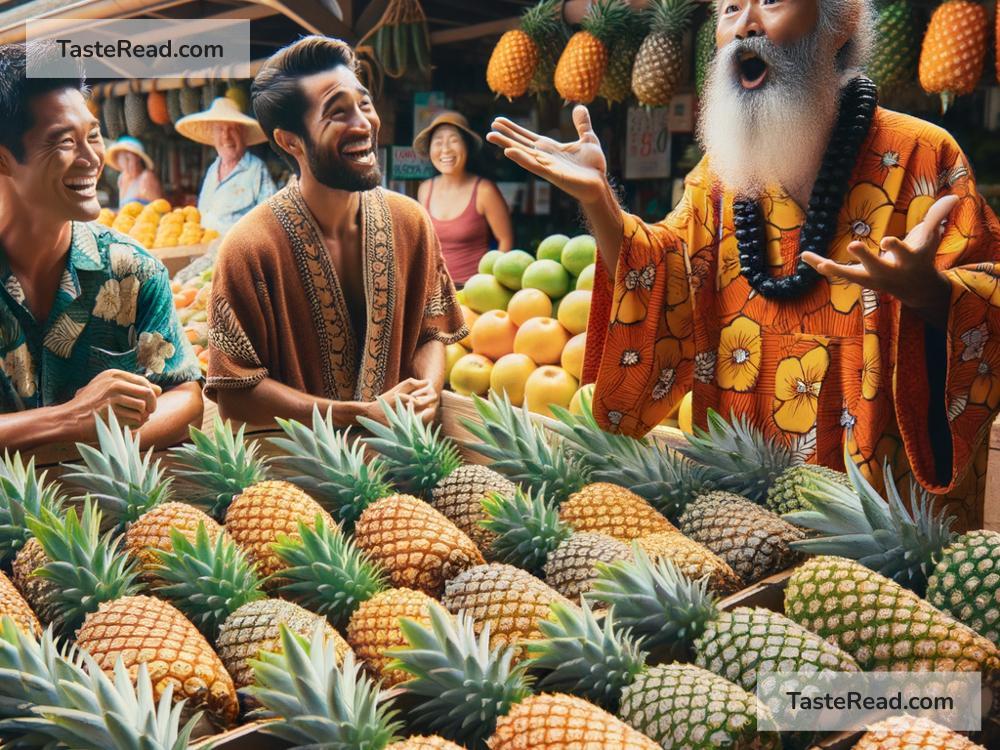The Curious Story of Pineapples in Hawaiian Culture
Pineapples are a sweet and juicy fruit that most people enjoy. While many associate pineapples with tropical islands and beautiful beaches, their connection to Hawaii is more complex than you might think. Despite being strongly tied to Hawaiian culture and tourism, pineapples don’t originally come from the islands. So, how did pineapples become such an important symbol of Hawaii? Let’s explore the curious story of pineapples in Hawaiian history, culture, and identity.
Pineapples’ Journey to Hawaii
Pineapples are not native to Hawaii. They actually come from South America. Indigenous people in countries like Brazil and Paraguay grew the fruit long before European explorers arrived. Spanish and Portuguese travelers helped spread pineapples across the world, bringing the fruit to places like Africa, Asia, and the Caribbean.
In the early 1800s, European settlers introduced pineapples to Hawaii. A man named Don Francisco de Paula Marin is often credited for planting the first pineapple crops in the islands. Marin was a Spanish advisor to Hawaiian royalty, and he was interested in growing different types of produce in Hawaii’s fertile soil. However, it wasn’t until the late 19th century that pineapples really began to shape Hawaii’s economy and way of life.
The Rise of Pineapple Plantations
In the 1880s, many businesspeople saw opportunities in Hawaii’s rich volcanic soil and sunny climate. Fruits like sugarcane and pineapples grew easily on the islands, so agricultural companies started large-scale plantations to grow these crops. One company, the Hawaiian Pineapple Company, was founded by James Dole in 1901. Dole quickly became known as the “Pineapple King,” and his company was responsible for making pineapples famous around the world.
Dole created pineapple plantations on Oahu, Hawaii’s most populated island, and later expanded to the smaller island of Lana’i. At one point, Lana’i earned the nickname “Pineapple Island” because nearly the entire island was dedicated to pineapple farming. Dole also built massive factories to can pineapples, making it easier to ship the fruit to mainland America and other countries. By the mid-20th century, Hawaii was producing most of the world’s pineapples.
Pineapples and Hawaiian Tourism
As Hawaii became known as a tropical paradise, pineapples became symbolically tied to the islands. The fruit represented exotic beauty, sweetness, and abundance, which matched the image of Hawaii as a dream vacation destination. Pineapples appeared in advertisements, postcards, and brochures encouraging tourists to visit.
In the 1950s and 1960s, Hawaii’s tourist industry grew rapidly. Hotels began serving pineapple drinks and decorating their spaces with pineapple motifs. Dishes like pineapple upside-down cake and cocktails like the piña colada became popular in Hawaiian restaurants. Even today, tourists are greeted at luaus (traditional Hawaiian parties) with pineapple garnishes and fruity drinks.
Unfortunately, some people mistakenly think pineapples have always been part of Hawaiian culture. The truth is that pineapples aren’t deeply rooted in Native Hawaiian traditions. For Native Hawaiians, foods like taro, breadfruit, and fish have historically been more important. Pineapples became a cultural symbol because of tourism and marketing, not because of ancient traditions.
The Decline of Pineapple Farming in Hawaii
Although pineapples had a strong economic impact on Hawaii for decades, farming the fruit became less profitable over time. In the late 20th century, other countries, like the Philippines and Thailand, began growing pineapples at lower costs. Since Hawaiian farms couldn’t compete with cheaper labor and production costs abroad, pineapple farming in Hawaii declined significantly.
Today, much of the pineapple sold around the world comes from places other than Hawaii. Many pineapple plantations in Hawaii closed down, and only a few remain active. The Dole Plantation on Oahu is still open, but it focuses more on tourism than agriculture. Visitors can learn about pineapple farming history, walk through pineapple gardens, and enjoy pineapple treats like Dole Whip.
Pineapples in Hawaiian Culture Today
Even though pineapples are no longer a major farming crop in Hawaii, they are still a powerful symbol of the islands. Pineapples are used in souvenirs, decorations, and food products sold across Hawaii. When people think of Hawaii, they often picture images of pineapples alongside hula dancers, palm trees, and ocean waves.
For Native Hawaiians, pineapples are a reminder of how the islands have been shaped by outside influences. While they may not carry the same cultural significance as traditional Hawaiian foods, pineapples contributed to Hawaii’s economy and identity during the 20th century.
Conclusion
The story of pineapples in Hawaiian culture is both surprising and fascinating. This fruit, which originated in South America, found its way to Hawaii through European settlers and grew into a booming industry thanks to entrepreneurs like James Dole. Over time, pineapples became a popular symbol of Hawaiian hospitality and tropical beauty, despite not being part of Native Hawaiian traditions.
Today, pineapples are an iconic image of Hawaii, reminding us of the islands’ agricultural past and their connection to tourism. Whether you enjoy them fresh, canned, or served as a decoration in a fruity drink, pineapples are more than just a delicious treat—they’re a curious piece of Hawaiian history.

